Gone are the days of hailing a cab or waiting for public transportation. Picture a world where you can summon a taxi without a human driver. Sounds like a sci-fi movie, right? By offering a quick and dependable means of transportation between locations without the inconvenience of traffic or human errors, autonomous taxis are revolutionising the transportation sector. The transportation of the future is already being experienced thanks to this cutting-edge technology.
This blog will shed a light on “Autonomous Taxis: A Game Changer for Urban Mobility”. After all, Who wouldn’t love the idea of being chauffeured around the city without any concerns about following traffic regulations? ?
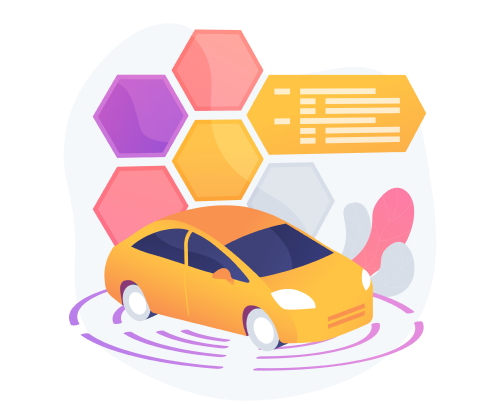
The future of transportation lies in self-driving taxis, which utilize advanced technology. However, taxi companies must provide additional services beyond autonomous transportation to thrive in the fiercely competitive market. They must also take into account how to attract and retain customers in the taxi business.
The taxis have multiple sensors such as radar, webcams, and LiDAR. All these play a critical role in helping them create a 360-degree view of their surroundings by using software to analyze this data, the taxis can understand different factors like delays & traffic flow. Ahem, at the end of the journey, the taxi applies a “360-degree view fee” to the total cost. Just Kidding ?
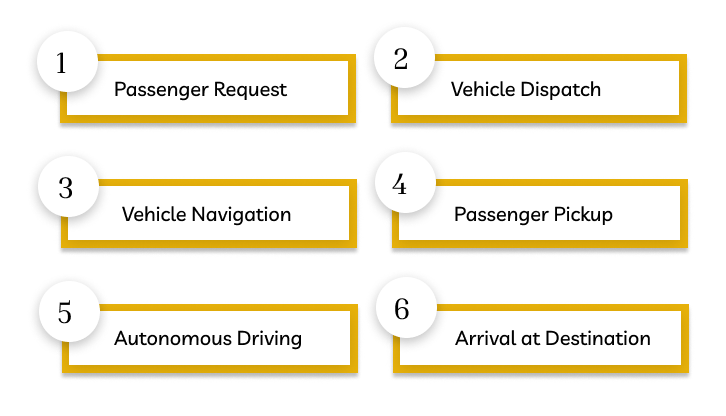
What’s exciting, though, is that the software that controls these autonomous taxis utilises machine learning algorithms to enhance its decision. In other words, the taxi gets smarter the more it drives! It adapts to various driving circumstances and gains knowledge from its road experiences, seeking to make every ride even more cosy and safe.
Another intriguing aspect of this technology is the business model for taxi aggregators. Having a backup strategy is advised in case the primary strategy fails. The distribution of trips among operators can be optimised using this platform, increasing productivity and lowering costs. Therefore, autonomous taxis are reimagining not only transportation but also how we view taxi companies.
Autonomous taxis have a few benefits compared to traditional taxis. One benefit is that they can run continuously without rest periods because they don’t need a human driver. They are therefore more affordable for taxi companies and more practical for customers. Additionally, autonomous taxis have the possibility to be more effective than conventional taxis. They can also use real-time traffic information to plan out their routes and steer clear of traffic jams, which will reduce travel time and fuel usage.
For instance, Uber’s business strategy focuses on offering accessible, reasonably priced, and sustainable transportation. They are advancing their mission by redesigning how we commute by incorporating self-driving taxis.
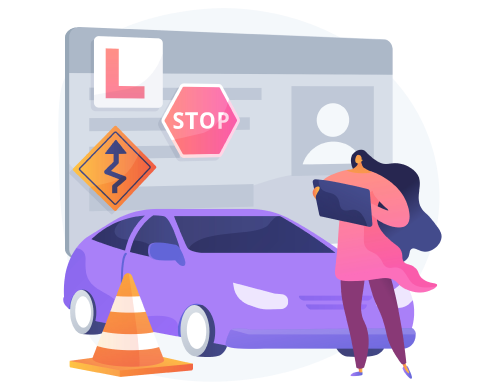
The development and regulation of autonomous taxis place a high priority on this. Numerous safety features are included with autonomous taxis to guarantee the security of travellers and other road users, including:
Many nations are now developing regulatory frameworks to regulate the implementation of autonomous vehicles. These frameworks cover topics like insurance, liability, and safety regulations
Besides safety features, autonomous taxis can incorporate eco-driving tips to reduce fuel consumption and emissions. These techniques include:

Autonomous taxis can improve transportation accessibility, particularly for those who have trouble getting around by themselves. The elderly, people with disabilities, and people who live in places with poor access to public transportation are all included in this. You can now order a ride from the convenience of your own home and have a self-driving taxi arrive at your door with the advent of taxi booking applications.

Autonomous taxis can play a significant role in helping to reduce traffic congestion in urban areas. These cars can move through traffic more quickly and safely thanks to self-driving technology, preventing delays and putting fewer cars on the road. This may result in quicker commutes, fewer irate drivers, and better use of the available road space.

Improved safety is among the most important advantages of autonomous taxis. Self-driving vehicles are outfitted with sophisticated sensors and cameras that can spot potential road hazards and react quicker than human drivers. This may lessen the number of collisions and fatalities brought on by mistakes made by people, like driving while caught off guard or under the influence.

Autonomous taxi services may be less expensive than regular taxi services. Due to the absence of a human driver, autonomous taxi services can operate at a lower cost. The business model of Ola, a well-known taxi booking app, is to lower transportation costs by advancing autonomous vehicle technology. Ola can offer lower rates to passengers and enhance mobility for everyone by doing away with the expense of hiring human drivers.
Although autonomous taxis have the ability to change urban mobility, there are still a number of obstacles that need to be removed before they can be widely adopted. Let us have a look at some of them;
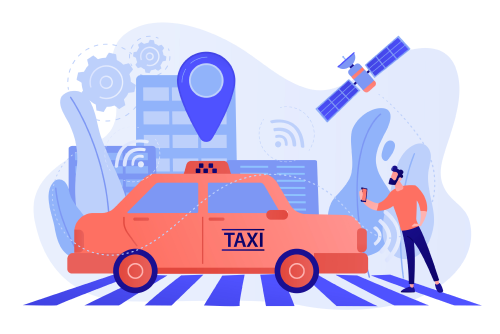

Self-driving cars rely on sensors, which are susceptible to weather, inadequate road markings, and unforeseen obstacles. Additionally, these vehicles must make quick, difficult decisions like trying to navigate through traffic and seeking to avoid collisions, which algorithms based on machine learning cannot complement in versatility and adaptability to the human mind.

Companies find it challenging to navigate the legal environment because self-driving cars are subject to a complicated web of laws at the federal, state, and local levels. Liability is a significant issue as well because it is not always clear who is to blame in an accident. Due to these ambiguities, it is difficult for autonomous taxis to achieve insurance protection and for policy makers to establish precise guidelines for their operation.

As worries about safeness, privacy, and job loss increase public scepticism, people are still reluctant to use this technology. Many people still favour using a human driver, particularly in densely populated urban areas. For instance, it may be challenging to persuade people to switch from radio taxis to autonomous taxis without the need for a clear indicator of their dependability and security.
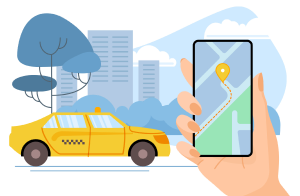
The global taxi market is thought to be worth about $108 billion, and if autonomous taxis can take even a small share of this market, it could revolutionise the transportation sector. Within the next ten years, according to experts, autonomous taxis may become widely used.
Numerous factors, including technological advancements, rising consumer demand for more practical and affordable transportation, and governmental policies encouraging the adoption of autonomous vehicles, could be fully accountable for this. Let’s be honest though; it’s probably just that we’re too lazy to drive. ?
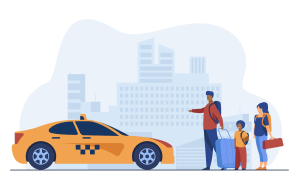
Because autonomous taxis operate without human drivers around-the-clock, they may find it difficult to compete with their lower costs and higher efficiency. This could result in significant loss of jobs in the taxi industry, which could have an impact on the economy as a whole.
New career opportunities in vehicle upkeep, data analysis, and customer support may arise as autonomous taxis become more prevalent. Shared autonomous taxis have the potential to reduce the number of vehicles on the road, easing traffic and enhancing air quality in urban areas. Not to mention, we won’t have to wait in the rain for a ride home after a night out, making it simpler for us to call a cab! ?
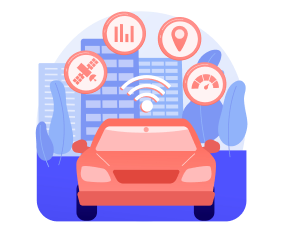
The technology underlying autonomous taxis is developing quickly, so in the upcoming years, we can anticipate some fascinating developments. Enhancing the safety and dependability of autonomous vehicles is a key area of focus because it is necessary to win over the general public.
The use of virtual assistants to improve the passenger experience, the integration of artificial intelligence to streamline taxi routes and cut wait times, and the use of blockchain technologies to guarantee safe and transparent online payments are all additional potential developments. The taxi industry has a promising future, but let’s just hope the robots don’t keep buying all the money ?

Urban mobility could be fundamentally changed if new modes of transportation are combined with public transportation. The use of public transportation will increase, traffic congestion will decrease, and air quality will improve as commuters can benefit from greater flexibility and accessibility. In order to furnish travellers with a more easy & convenient mode of transportation, the Grab Taxi has managed to integrate public transportation systems in multiple cities.

Uber and Lyft have thrown off the conventional taxi industry, causing a drop in demand for traditional taxis and a detrimental impact on the earnings and job security of taxi drivers. Even so, these services have also given drivers without access to traditional taxis a new career path.

Bicycles and scooters are two alternate modes of transportation that are completely changing how cities view infrastructure and urban design. Wider sidewalks, dedicated bike lanes, and slower speed limits are now common in many cities, which prioritise pedestrian and bicycle comfort. As a result, there is less traffic congestion, more safety, and a greater emphasis on healthy living.
It is anticipated that the rise of self-driving taxis will alter our travel habits and urbanise our lifestyles. But there are challenges to be overcome, just like with any new technology. While there are challenging obstacles in the way, there are also promising opportunities. One thing is for sure – urban transportation’s future looks bright and boundless!
Leave a Reply